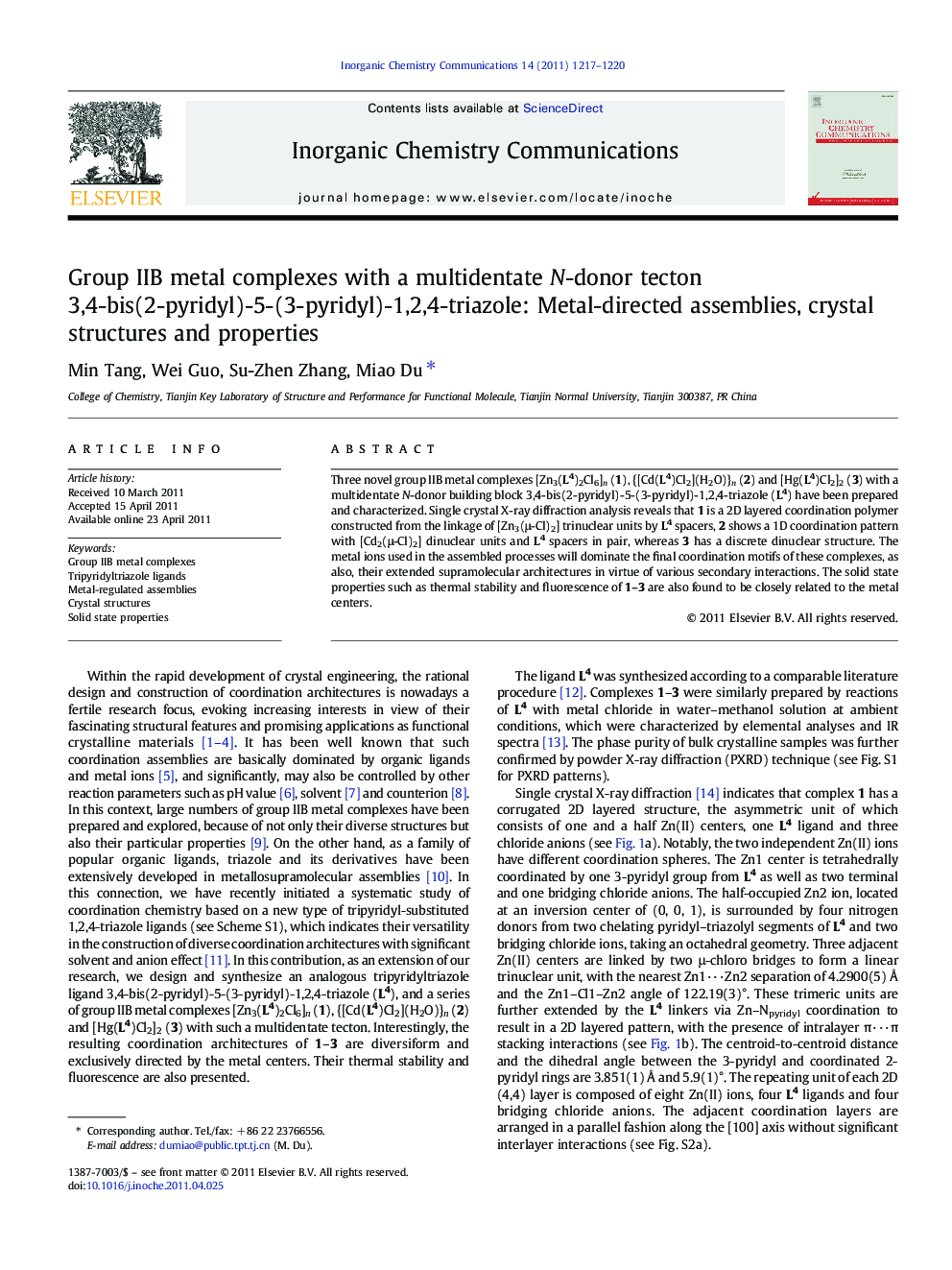| Article ID | Journal | Published Year | Pages | File Type |
|---|---|---|---|---|
| 1302632 | Inorganic Chemistry Communications | 2011 | 4 Pages |
Three novel group IIB metal complexes [Zn3(L4)2Cl6]n (1), {[Cd(L4)Cl2](H2O)}n (2) and [Hg(L4)Cl2]2 (3) with a multidentate N-donor building block 3,4-bis(2-pyridyl)-5-(3-pyridyl)-1,2,4-triazole (L4) have been prepared and characterized. Single crystal X-ray diffraction analysis reveals that 1 is a 2D layered coordination polymer constructed from the linkage of [Zn3(μ-Cl)2] trinuclear units by L4 spacers, 2 shows a 1D coordination pattern with [Cd2(μ-Cl)2] dinuclear units and L4 spacers in pair, whereas 3 has a discrete dinuclear structure. The metal ions used in the assembled processes will dominate the final coordination motifs of these complexes, as also, their extended supramolecular architectures in virtue of various secondary interactions. The solid state properties such as thermal stability and fluorescence of 1–3 are also found to be closely related to the metal centers.
Graphical abstractThree supramolecular complexes with the group IIB metals and a novel tripyridyltriazole tecton have been synthesized, which exhibit diverse 2D, 1D and dimeric coordination motifs regulated by the metal centers. Their thermal and fluorescent properties have also been discussed.Figure optionsDownload full-size imageDownload as PowerPoint slideResearch highlights► Three group IIB metal complexes with a novel tripyridyltriazole ligand are obtained. ► Their distinct supramolecular lattices are dominated by the nature of metal centers. ► These complexes show different thermal and fluorescent behaviors.
